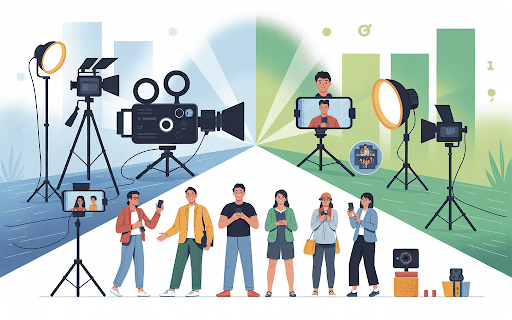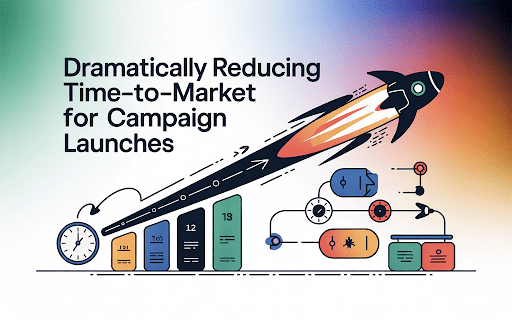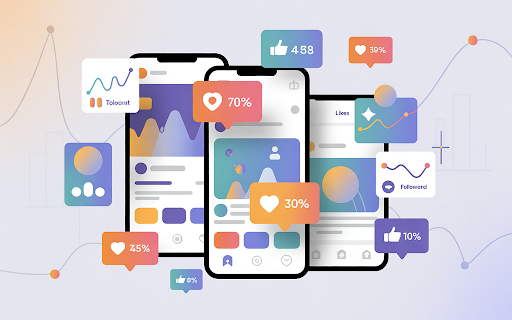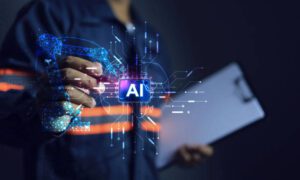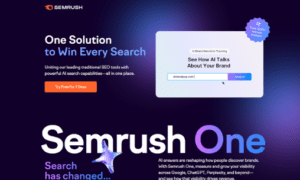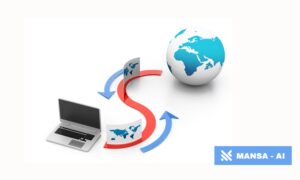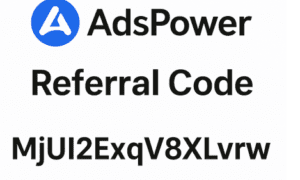Introduction
The content marketing landscape has undergone a seismic shift in 2025, and AI video generation stands at the epicenter of this transformation. What once required expensive production crews, professional studios, and weeks of editing can now be accomplished in minutes with sophisticated AI algorithms. This isn’t just an incremental improvement—it’s a complete disruption of how businesses create, distribute, and scale video content.
Global spending on video marketing reached $135 billion in 2024, yet the majority of businesses still struggle with video production costs and complexity. Enter AI video generation technology, which is democratizing video creation and fundamentally changing the rules of content marketing. From solo entrepreneurs to Fortune 500 companies, organizations are discovering that AI-powered video tools deliver professional results at a fraction of traditional costs while enabling unprecedented scalability.
The implications extend far beyond simple cost savings. AI video generation is reshaping content strategies, enabling personalization at scale, and creating new competitive advantages for early adopters. For fintech startups, crypto projects, and tech companies competing in crowded markets, mastering AI video generation has become a strategic imperative. Let’s explore the seven most significant ways this technology is disrupting content marketing in 2025.
1. Democratizing Video Production for Startups and Small Businesses
The first and most profound disruption is accessibility. Historically, quality video content remained the exclusive domain of well-funded companies with substantial marketing budgets. A single 60-second promotional video could cost $5,000-$50,000 when factoring in scriptwriting, actors, filming, and post-production. This pricing structure effectively locked out startups, solopreneurs, and small businesses from video-first marketing strategies.
AI video generation has obliterated these barriers. Platforms like img2video.art now enable anyone to transform static images into engaging video content within minutes, requiring zero technical expertise or video production knowledge. A fintech startup can convert product screenshots into compelling demo videos. An e-commerce entrepreneur can turn product photos into dynamic social media advertisements. A crypto project can transform whitepaper diagrams into explainer videos.
The economics are striking. What previously cost thousands now costs dollars—or even nothing for basic tiers. This democratization has triggered an explosion of video content from previously underrepresented market segments. Small businesses that never considered video marketing now publish video content regularly, competing effectively with larger competitors who once dominated video-centric platforms like YouTube, TikTok, and Instagram Reels.
More importantly, the democratization extends beyond just cost. AI tools eliminate the learning curve associated with traditional video editing software. Entrepreneurs don’t need to master Adobe Premiere Pro or Final Cut Pro—they simply upload images, select preferences, and receive polished videos. This accessibility is fundamentally reshaping the competitive landscape, where creative strategy now matters more than production budgets.
2. Enabling Hyper-Personalization at Enterprise Scale
The second major disruption addresses a challenge that has plagued marketers for decades: personalization at scale. Traditional video production creates a fundamental conflict—each variation of a video requires separate filming and editing, making true personalization economically unfeasible. Companies settled for one-size-fits-all videos or, at best, a handful of variations for major demographic segments.
AI video generation solves this paradox by treating personalization as a computational problem rather than a production challenge. Modern AI platforms can generate thousands of video variations from a single template, each customized with different names, locations, product recommendations, or messaging. A fintech company can create personalized investment portfolio videos for each client. An insurance provider can generate customized policy explanation videos. A B2B SaaS company can produce tailored demo videos for different industries.
The technology behind this capability has matured significantly. Natural language processing enables dynamic text insertion that feels contextual rather than template-driven. Computer vision algorithms adjust visual elements based on recipient demographics. Voice synthesis technology can even personalize narration, addressing viewers by name with natural-sounding audio. Using services like img2video.live, marketers can automate the entire personalization pipeline, integrating directly with CRM systems to generate customized videos triggered by user behavior or sales funnel position.
Email marketing campaigns exemplify this disruption. While email personalization has long included recipient names and basic demographic data, AI-generated video now enables genuine visual personalization. Imagine receiving a product recommendation email where the embedded video shows products you’ve previously browsed, includes your name in the opening sequence, and addresses your specific pain points identified through previous interactions. Early adopters report engagement rate increases of 300-500% compared to traditional video content, with significantly higher conversion rates throughout the sales funnel.
3. Dramatically Reducing Time-to-Market for Campaign Launches

Speed defines competitive advantage in digital marketing, yet traditional video production is notoriously slow. From concept to final delivery, even simple videos typically require 2-4 weeks—an eternity in fast-moving markets like cryptocurrency, emerging technology, or trending consumer products. By the time your video is ready, market conditions may have shifted, competitor announcements may have changed the narrative, or consumer interest may have moved elsewhere.
AI video generation compresses this timeline from weeks to hours—sometimes minutes. When a fintech company needs to respond to a competitor’s announcement, they can produce and publish video commentary the same day. When a crypto project experiences a significant development, community videos can be generated and distributed before the news cycle moves on. When e-commerce trends emerge on social media, retailers can create product videos capitalizing on the trend while it’s still relevant.
This speed advantage manifests across the entire content lifecycle. A/B testing becomes genuinely practical when you can generate multiple video variations in minutes rather than commissioning separate productions for each variant. Seasonal campaigns can be adjusted in real-time based on performance data. Product launches can include video content from day one rather than waiting for production schedules. Marketing teams can operate with unprecedented agility, treating video content as dynamic and responsive rather than static and permanent.
The operational implications are profound. Marketing departments reduce their dependency on external agencies and lengthy approval processes. Campaign timelines shrink, enabling more iterations and faster learning cycles. Organizations can maintain relevance in rapidly evolving conversations—crucial for tech companies where yesterday’s innovation becomes today’s expectation. This temporal disruption may be AI video generation’s most underappreciated competitive advantage.
4. Unlocking New Revenue Streams Through Content Scalability
The fourth disruption creates entirely new business models and revenue opportunities. When video production costs drop by 90-99% and timelines compress from weeks to hours, organizations can pursue video strategies previously considered economically impossible. This scalability unlocks revenue streams that simply didn’t exist in the traditional video production paradigm.
Consider content creators and influencers. Previously, producing regular video content required significant time investment, limiting publishing frequency and channel diversification. AI video generation enables creators to maintain multiple content streams simultaneously—daily social media clips, weekly YouTube essays, platform-specific variations—without proportionally increasing workload. A single creator can now produce the content volume that once required an entire production team.
For businesses, this scalability enables new service offerings. Marketing agencies can offer video content subscriptions—50 customized videos monthly for a fixed fee—something impossible with traditional production economics. E-commerce platforms can provide automated product video generation as a value-added service for sellers. SaaS companies can create video onboarding sequences personalized for each customer’s use case and industry.
The B2B implications are particularly significant. Companies can develop video-based knowledge bases where every article includes a companion video explanation. Customer success teams can send personalized video tutorials addressing specific customer questions. Sales teams can create customized proposal videos for each prospect. These applications were theoretically desirable but practically unfeasible before AI video generation made them economically viable.
Platforms such as img2video.org are specifically designed to support high-volume video generation workflows, providing APIs and bulk processing capabilities that enable businesses to integrate AI video creation directly into their existing systems and workflows. This infrastructure-level integration represents the maturation of AI video from novelty tool to essential business capability.
5. Transforming Social Media Strategy with Platform-Optimized Content

Social media marketing presents a unique challenge: each platform demands different video specifications, aspect ratios, durations, and content styles. Instagram Reels require vertical 9:16 format, TikTok favors authentic, fast-paced content, YouTube prefers longer-form horizontal videos, and LinkedIn rewards professional, informative content. Creating platform-optimized versions of the same core message traditionally required producing each variation separately—multiplying costs and complexity.
AI video generation treats multi-platform optimization as a technical problem with an algorithmic solution. Upload your source content once, and the AI generates platform-specific versions automatically—adjusting aspect ratios, modifying pacing, altering text placement, and even adapting visual styles to match platform conventions. A single product announcement can become a 60-second YouTube video, a 15-second Instagram Reel, a 9:16 TikTok clip, and a professional LinkedIn post without manual reformatting.
This capability fundamentally changes social media strategy. Marketing teams can pursue genuine omnichannel approaches without proportionally scaling their resources. Small businesses can maintain sophisticated social media presences across multiple platforms—something previously requiring dedicated social media managers or agencies. The consistency of messaging across platforms improves while respecting each platform’s unique culture and technical requirements.
The disruption extends beyond mere formatting. AI algorithms now understand platform-specific engagement patterns and can optimize content accordingly. TikTok videos might include faster cuts and trending audio, while LinkedIn versions emphasize data visualization and professional narration. Instagram content might incorporate interactive elements like polls or questions, while YouTube videos include chapter markers and detailed descriptions. This platform intelligence, embedded in the generation process, helps content perform optimally within each ecosystem’s unique algorithm.
6. Revolutionizing Video SEO and Discoverability
Search engines have dramatically increased their emphasis on video content in search results. Google displays video carousels for informational queries, YouTube serves as the world’s second-largest search engine, and social platforms increasingly surface video content in user feeds. However, creating sufficient video content to capture this search traffic remained prohibitively expensive for most businesses—until AI video generation changed the economics.
The SEO disruption operates on multiple levels. First, businesses can now create video content for long-tail keywords that would never justify traditional production costs. A fintech company can produce explanatory videos for hundreds of specific financial questions. A tech startup can create video tutorials for every feature and use case. An e-commerce business can develop video reviews for their entire product catalog. This comprehensive video coverage captures search traffic previously inaccessible through text content alone.
Second, AI-generated videos can be optimized for search from creation. Transcripts, metadata, descriptions, and tags can be generated simultaneously with the video, ensuring search engine compatibility from day one. The AI can even analyze trending keywords and incorporate them naturally into video content, maximizing discoverability without sacrificing content quality or authenticity.
Third, the ability to rapidly update video content addresses a critical SEO challenge: freshness. Search algorithms favor recently published or updated content, but traditional video production makes regular updates expensive. AI generation enables businesses to refresh video content regularly—updating statistics, addressing new developments, or incorporating current events—maintaining search visibility without constant production investments.
The cumulative effect is significant. Businesses implementing comprehensive AI video strategies report substantial increases in organic traffic, with video content often outperforming text articles for the same keywords. Video appearances in featured snippets, knowledge panels, and rich results drive click-through rates well above traditional text listings. For companies competing in saturated markets, superior video SEO represents a genuine competitive moat.
7. Creating Data-Driven Optimization Loops
The final disruption may be the most transformative: AI video generation enables true data-driven video optimization at scale. Traditional video production’s high costs made extensive testing impractical. Creating five variations of a video for A/B testing could cost $25,000-$100,000, forcing marketers to rely on intuition and limited testing. The feedback loop from performance data to improved content stretched over months.
AI video generation inverts this dynamic entirely. When creating video variations costs pennies and takes minutes, comprehensive testing becomes standard practice rather than luxury. Marketers can test multiple thumbnails, various opening sequences, different narration styles, alternative calls-to-action, and diverse visual approaches—simultaneously. Performance data flows back rapidly, enabling algorithmic optimization where successful elements are identified, replicated, and refined across content portfolios.
This creates a compounding advantage. Early AI video adopters accumulate performance data revealing what works for their specific audiences and goals. These insights inform subsequent video generation, creating an optimization loop where each iteration performs better than the last. Machine learning algorithms can even automate this process, analyzing performance metrics and automatically adjusting future video generation parameters.
The marketing implications are profound. Video content evolves from static creative assets to dynamic, continuously improving systems. Underperforming videos can be rapidly iterated and republished. Successful formats can be identified and scaled across campaigns. Audience preferences can be detected and accommodated in real-time. Organizations gain the ability to treat video content with the same analytical rigor previously reserved for text-based digital marketing.
Furthermore, the reduced stakes of individual video performance encourage experimentation. When video production required substantial investment, failures were costly and discouraged risk-taking. With AI generation, failed experiments cost almost nothing, fostering innovation and creative exploration. Marketing teams can test unconventional approaches, explore emerging platforms, and pursue creative risks that generate breakthrough results.
The Strategic Implications for Modern Marketers
These seven disruptions collectively represent a fundamental restructuring of content marketing’s economic and operational foundations. AI video generation isn’t simply making existing processes cheaper or faster—it’s enabling entirely new strategies, business models, and competitive dynamics. The winners in this new landscape will be organizations that recognize these shifts early and restructure their content operations accordingly.
For startups and small businesses, AI video generation offers unprecedented opportunity to compete with established players. The playing field has leveled—creative strategy and execution speed now matter more than budget size. For enterprise organizations, the technology enables scale and personalization that justify significant marketing technology investments. For marketing agencies, AI video represents both threat and opportunity, demanding new service models but enabling previously impossible client outcomes.
The barrier to entry in video marketing has effectively disappeared. The question is no longer “Can we afford video content?” but rather “How quickly can we scale our video strategy?” Organizations still operating under traditional video production paradigms face growing competitive disadvantages as AI-native competitors execute faster, test more aggressively, and reach audiences more effectively.
Conclusion: Embracing the AI Video Revolution
The content marketing industry has reached an inflection point. AI video generation has matured from experimental technology to essential infrastructure, delivering measurable business results across diverse use cases and industries. The seven disruptions outlined here—democratization, personalization, speed, scalability, multi-platform optimization, SEO enhancement, and data-driven optimization—are already reshaping competitive dynamics in 2025.
Forward-thinking marketers are moving beyond questioning whether to adopt AI video generation and instead focusing on how to maximize its strategic value. They’re rebuilding content workflows around AI capabilities, training teams in new skills, and exploring applications that weren’t feasible before. The organizations that embrace this transition most effectively will establish significant competitive advantages in an increasingly video-centric digital landscape.
The disruption is not coming—it’s here. The only question remaining is whether your organization will lead this transformation or scramble to catch up as competitors seize the advantages AI video generation provides. The tools are available, the economics are compelling, and the competitive pressure is mounting. The moment to act is now.

